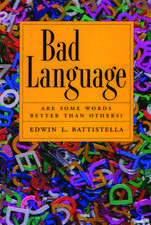Dialects Converging: Rural Speech in Urban Norway: Oxford Studies in Language Contact
Autor Paul Kerswillen Limba Engleză Hardback – 24 noi 1994
Din seria Oxford Studies in Language Contact
- 34%
 Preț: 1155.03 lei
Preț: 1155.03 lei - 28%
 Preț: 361.76 lei
Preț: 361.76 lei - 31%
 Preț: 411.99 lei
Preț: 411.99 lei - 27%
 Preț: 361.20 lei
Preț: 361.20 lei - 31%
 Preț: 411.62 lei
Preț: 411.62 lei - 22%
 Preț: 301.32 lei
Preț: 301.32 lei - 27%
 Preț: 332.64 lei
Preț: 332.64 lei - 34%
 Preț: 1155.75 lei
Preț: 1155.75 lei - 34%
 Preț: 1421.16 lei
Preț: 1421.16 lei - 34%
 Preț: 1012.42 lei
Preț: 1012.42 lei - 34%
 Preț: 1422.32 lei
Preț: 1422.32 lei - 23%
 Preț: 266.12 lei
Preț: 266.12 lei - 34%
 Preț: 750.53 lei
Preț: 750.53 lei - 23%
 Preț: 282.43 lei
Preț: 282.43 lei - 26%
 Preț: 202.52 lei
Preț: 202.52 lei
Preț: 412.97 lei
Preț vechi: 601.03 lei
-31% Nou
Puncte Express: 619
Preț estimativ în valută:
79.02€ • 82.50$ • 65.40£
79.02€ • 82.50$ • 65.40£
Carte tipărită la comandă
Livrare economică 24-31 martie
Preluare comenzi: 021 569.72.76
Specificații
ISBN-13: 9780198248262
ISBN-10: 0198248261
Pagini: 196
Ilustrații: line figures, tables
Dimensiuni: 162 x 242 x 18 mm
Greutate: 0.49 kg
Editura: Clarendon Press
Colecția Clarendon Press
Seria Oxford Studies in Language Contact
Locul publicării:Oxford, United Kingdom
ISBN-10: 0198248261
Pagini: 196
Ilustrații: line figures, tables
Dimensiuni: 162 x 242 x 18 mm
Greutate: 0.49 kg
Editura: Clarendon Press
Colecția Clarendon Press
Seria Oxford Studies in Language Contact
Locul publicării:Oxford, United Kingdom
Recenzii
...considerably more readable than many with similar antecedents. It will certainly prove useful to those interested in current developments in social dialectology and dialect contact, and it provides an excellent model in many respects for advanced students in these areas.









